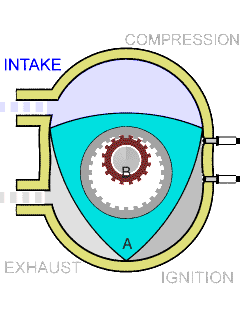Why is the RX8 always compared to cars 2x the engine size?
#1
Why is the RX8 always compared to cars 2x the engine size?
I'm not sure i understand why everyone puts a 1300cc engine in the same class as a 3500cc engine? I don't get the comparison.
They dont put 150lb fighters in with 300lb fighters in the UFC.
They dont put 150lb fighters in with 300lb fighters in the UFC.
#7
Well, considering everyone compares this car to others in the same price range. it is compared to those of much larger engines in "size." I'd say the rx-8 was put in comparison with them from the beginning, wouldn't you? if not, then tell me what cars you were considering before you decided on the 8. engine size doesn't matter. it could be thought of as 1.3, 2.6, or even 3.9.
#10
Well, considering everyone compares this car to others in the same price range. it is compared to those of much larger engines in "size." I'd say the rx-8 was put in comparison with them from the beginning, wouldn't you? if not, then tell me what cars you were considering before you decided on the 8. engine size doesn't matter. it could be thought of as 1.3, 2.6, or even 3.9.
#11
Forget about engine size - think power and (lack of, lol) torque. It is usually compared to cars of similar price, performance and configuration (i.e. mid-priced coupe-shaped respectably quick sports cars). The fact that it has such unique characteristics just makes such comparisons more interesting. 

#12
This is exactly right. For anyone who is actually planning on buying a car and not just magazine race, price is pretty much the starting point -- not engine size.
#15
I like the rotary, and if more people besides Mazda developed it, I am sure it would be even better than it is now.
It still has terrible fuel mileage.
I could ask, why does a car with double or even triple the displacement get better mileage?
#16
#17
When I read this in a comparison between the RX-8, 350Z, and 330i on Automobilemag.com I was initially confused in light of the discussion in this thread about doubling the Renesis' displacement to compare it to a four-stroke engine:
But I think I've made sense of it now. The gearing between the E-Shaft and the rotor results in 1 power pulse per revolution. With two rotors connected to the shaft, that's two power pulses per revolution.

With a 6 cylinder piston engine, though, you get 3 power pulses per revolution of the crankshaft, since it takes 720 degrees for each piston to complete the four stroke cycle--only half of the pistons fire per 360 degrees. Which means that power is produced by the full displacement only after two revolutions.
So depending on your perspective, the displacement of the Renesis is either 100% underrated, or that of the piston engine is 100% overrated.
And this means that the twin-rotor engine delivers power like a 4-cylinder.
...the twin-rotor Mazda 13B displaces just 1308 cubic centimeters and produces only two power pulses per engine revolution versus the reference cars' three.

With a 6 cylinder piston engine, though, you get 3 power pulses per revolution of the crankshaft, since it takes 720 degrees for each piston to complete the four stroke cycle--only half of the pistons fire per 360 degrees. Which means that power is produced by the full displacement only after two revolutions.
So depending on your perspective, the displacement of the Renesis is either 100% underrated, or that of the piston engine is 100% overrated.
And this means that the twin-rotor engine delivers power like a 4-cylinder.
#20
Thread
Thread Starter
Forum
Replies
Last Post
Jesus Martinez
Series I Aftermarket Performance Modifications
72
07-26-2023 11:29 PM
Touge
Canada Forum
0
08-11-2015 10:19 PM





